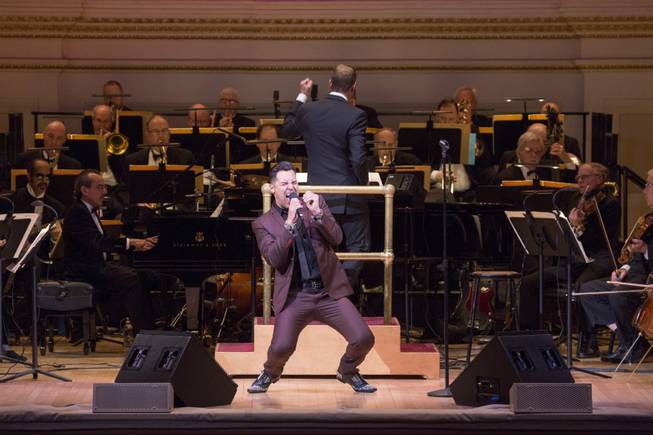
Richard Termine
Las Vegas headliner Frankie Moreno performs at the “Let’s Be Frank” show with the New York Pops at Carnegie Hall on Friday, April 10, 2015, in New York City. New York Pops Music Director Steven Reineke directed the orchestra.
Sunday, April 12, 2015 | 8:33 p.m.
NEW YORK — Before the show, there is the requisite afternoon rehearsal.
But this is no ordinary show, and thus it will be no ordinary rehearsal.
This is a full-force tribute to the vaunted career of Frank Sinatra at Carnegie Hall. The show is titled “Let’s Be Frank” featuring the New York Pops orchestra, 80 musicians strong, with a quartet of guest stars, among them Las Vegas headliner Frankie Moreno. In the oddly matched but artistically symmetrical lineup are Broadway star Ryan Silverman, Sinatra specialist Tony DeSare and the multifaceted vocalist Storm Large.
The show marks the first Carnegie Hall performance by Moreno, attempting not to be swallowed up by the power of this famed venue, while concurrently absorbing every moment and producing a performance worthy of this historic stage.
Adding to the creative tension of the event is the show is sold out, the last ticket sold more than a day before show time. Even such Carnegie Hall vets as music director Steven Reineke chirp to his assorted artists, “We are sold out! This is going to fun!” It’s the sixth sellout in the Pops’ seven-show season, and the Sinatra tribute is the rousing finale of the 2014-15 campaign.
Fittingly, the rehearsal is memorable, as it is in fact a scaled-back performance before an audience of a few hundred high-level Carnegie Hall season members. These folks are instructed not to applaud, but they do anyway, as the orchestra’s sound envelops the audience, and the voices roll through the hall.
Nonetheless, Moreno soon has a few concerns.
There is the matter of a faulty harmonica, or harp. During this spirited run-through, Moreno has blown out a reed in what would be the smallest and only malfunctioning instrument to be played at Carnegie Hall’s 2,800-seat Isaac Stern Auditorium.
“That never happens,” Moreno says. “You get 10 holes in a harmonica, and I’ve lost one.”
Moreno winds up keeping the harmonica, playing around the blown-out reed, in his Carnegie Hall debut. And who plays a harmonica in a Frank Sinatra tribute in such a classic setting as Carnegie Hall?
Moreno does. He has no doubt that the solo, notched in the middle of “That’s Life,” in the show’s second number, will jar the audience to attention. The harp has always been a Moreno favorite from his days playing such haunts as Rush Lounge at Golden Nugget. The decision to play that particular instrument opens up the larger question of how loose Moreno should perform during that night’s show.
“It’s a classic venue, and you don’t know how the audience is going to react,” he says. “But this is The Rat Pack. I’m here to represent Sinatra in Las Vegas, and they were pretty loose.”
So Moreno cut loose.
* * *
This event hits a convergence of coincidental events in Moreno’s life. The birthday of his grandfather Manny, a huge fan of Sinatra, fell on Thursday. This was the man who once told Moreno that if he appeared at Carnegie Hall, he will have made it as an artist. Also, the 30th anniversary of the Carnegie Hall debut of Moreno’s friend Joshua Bell falls on the very night of Moreno’s debut, April 10, but Bell was busy playing in San Francisco over the weekend and could not make the show.
But Bell’s manager — musician, conductor and music exec David Lai — was on hand. It was Lai who has long sought to book Moreno with the New York Pops, as he hooks guest stars for pops shows for such great halls as Carnegie and Kennedy Center in Washington, D.C. (where this show, again featuring these four guest stars, is set for June).
This entire Moreno-Bell professional partnership was sparked the night six years ago when Bell took a flyer from members of the Las Vegas Philharmonic to see Moreno play at Rush Lounge after Bell appeared with the Phil at Ham Hall. Soon after, Moreno and Bell recorded a sinewy cover of “Eleanor Rigby” for Bell’s album “At Home With Friends,” and since then the two have since recorded together and performed at various locales, including the Hollywood Bowl last July.
The Hollywood Bowl is often referred to as the Carnegie Hall of the West for its incredibly lush sound and history-steeped tradition. And you do sense, unmistakably amid the chills you experience upon entry, the power of Carnegie Hall’s heritage. Tchaikovsky opened the venue in May 1891, and practically every legendary artist in classic and contemporary music has headlined at the venue. The impeccable sound and look of the hall are storied; the classic gold-and-white design effects, and rounded, wedding-cake style seating structure has been copped by performing arts centers across the country.
As a result, there is a familiar feel to Isaac Stern Auditorium. The main hall is not so dissimilar from Reynolds Hall at the Smith Center, in fact (as officials toured the hall before construction of the Smith Center), although Reynolds has its own distinctive art-deco design.
But similar to Sinatra, Carnegie Hall is the original. It is the inspiration for so many that followed. The show is in fact a celebration of a classic concert venue and contemporary artist, the man Reineke accurately describes as “one of the most influential artists and pop-culture icons of the 20th century.”
And the guy from Las Vegas gets to open the show. Moreno stops just as he walks onstage and cups his hands to his ears, goosing the audience to let go, and the volume rises. He sings “It Had To Be You,” in a subtle voice, carried along by a surf of sound from the orchestra. During “That’s Life,” he throws his voice high, using his full range (as his producer Pat Thrall at Studio at the Palms has forcefully encouraged), causing Reineke to spin around and face the singer instead of the musicians. It is one of several improvised moments from Moreno during the show.
The harmonica then comes out, as hoped, blasting through the hall, and the audience laughs and applauds. He delivers all the elements from his stage show in Las Vegas — dropping to his knees, throwing off his jacket and, in yet another unrehearsed moment, moves off the mic and sings a cappella as the orchestra falls nearly silent. That vocal ploy worked well enough at the Stratosphere, and others have used it effectively in town (especially Franky Perez), but singing a cappella in Carnegie Hall is an especially high level of vocal artistry.
At song’s end, Reineke remarks, “Who would have expected a harmonica to be played at a Frank Sinatra show?” Moreno introduces DeSare for “My Funny Valentine,” and DeSare and Large swap lines in “Something’s Gotta Give.” It’s a great pairing of fire and ice, as DeSare is a classic standards singer and Large is, originally, a real rocker out of Portland, Ore., who gained fame on CBS’ “Rock Star Supernova” a few years back. She has since moved on to singing standards, and this show is her second at Carnegie Hall.
Large moves on to “The Best Is Yet to Come,” the bluesy Quincy Jones arrangement, and then “Come Rain or Come Shine.” A tuxedoed Silverman, well-postured and beaming broadly, is summoned for “I’m Gonna Live Till I Die” and “Moonlight Becomes You” and introduces “The Birth of the Blues.”
“You know, Frankie and I have sung this song before, in New York and elsewhere,” he says, as the two performed in a Rat Pack-fashioned show at the Plaza in New York several years ago. “But he’s off having a drink, so I’m going to sing it solo.”
That was a thinly veiled warning that some shtick was in the offing. Midway through the song, a disembodied voice carried through the hall. “Ryan! Hey! I thought we were singing this together!” It was Moreno, halfway up the aisle in the orchestra section. He’s carrying a martini glass and walking purposefully to the stage and finishes the song in a vocal parry with Silverman.
From the stage, Moreno notes his grandfather’s influence, remembering that he was told, “If you ever make it to Carnegie Hall, make sure you sing a Frank Sinatra song.” He says he needs to play the piano, given the setting and the fact that he is a classically trained pianist, and invites DeSare back to the stage.
The two jam side-by-side in a boogie-woogie version of “All of Me.” The two swap positions on the keyboard and stand to allow the other to solo. Moreno then goes off the grid once more, spinning around and playing the instrument cross-armed, with his back to the keys. Once more Reineke looks at Moreno, grinning, and the crowd roars. Later a stagehand remarks to Moreno, “That’s something we haven’t seen here before.” Silverman wasn’t surprised, saying after the show, “I knew he was going to do that. It was great.”
The ending is a four-part medley of Sinatra hits as Reineke attempts to wedge in as many of the Chairman’s classics as possible. The closer is predictable but powerful, “New York, New York,” and the Carnegie Hall crowd rises to sing along. If there’s a more appropriate way to close this show, no one can think of it.
“I was just trying to capture the moment,” Moreno says afterward. “I wanted to make sure I remembered what it felt like up there, and it was incredible. I mean, I look at the place were I was standing, and that’s where Tchaikovsky stood. I’ll never forget it.”
* * *
The end of the Carnegie Hall experience is not the end of Moreno’s weekend. Typical of his manic schedule, he landed back in Las Vegas about 4 p.m. Saturday, hit Mandalay Bay for a private event hosted by hotel President Chuck Bowling, then was onstage at Rocks Lounge at Red Rock Resort, hustling over for a 7:30 start for a show that was to start at 7 p.m. He plays through until about 9 p.m., as energetically as ever, topping off a spree of more than six hours of cross-country performances in 24 hours.
Near the end of the show, Moreno tosses back a shot of the brown liquid and talks to the crowd.
“We just played Carnegie Hall last night, but my favorite people to play for are right here in Las Vegas,” he says. “Thank you for spending time with us.”
The Moreno performance at Carnegie Hall was an individual achievement, no question. But it also was a statement about the high level of talent on display, regularly, on the stages of Las Vegas. For one remarkable night in New York, it was Frankie Moreno’s time to represent this city, and he delivered.
It is virtually impossible to be anywhere in Las Vegas and miss the Stratosphere. It towers 1,149 feet above Las Vegas and is the tallest observation tower in the United States. The casino itself is 55,784 square feet and contains 950 slot machines, 120 game tables and 2,427 hotel rooms.
Of the hotel's 2,427 rooms, 909 were recently remodeled into Stratosphere Select rooms.
The Stratosphere is mostly known for its rides at the top of the tower. The Big Shot, located at the 113th floor, torpedoes riders up 160 feet using compressed air. X-Scream is a teeter-totter perched at the top of the observation deck ��� if that wasn't scary enough, the coaster arm flings the riders out 27 feet over the edge of the tower. Guests looking for something more sedate can just hang around the 107th floor and simply look at the scenery.
Situated at the entrance to Red Rock Canyon and minutes from the world-renowned Las Vegas Strip, Red Rock Casino, Resort & Spa offers five-star luxury in a modern property, built in 2006.
The casino features features 3,000 slot and video poker machines, 60 table games including blackjack, baccarat, craps, poker, roulette, a 206-seat Race and Sports Book with a 96-foot video wall a 20-table smoke-free poker room open 24 hours a day, a 600-seat bingo hall with separate smoking and non-smoking sections, open 7 days a week with sessions running every other hour from 9 a.m. to 11 p.m., a 20-seat keno lounge and a private high-limit room.
A recipient of the AAA Four Diamond Award since opening and named one of the world's best new hotels by Conde Nast Traveler magazine, Red Rock redefines casino resort architecture by incorporating natural light, a convenient layout and the comforts of a modern lifestyle.
The centerpiece of the property is the three-acre pool complex with 19 cabanas and swim-up gaming. Its location allows for balcony views from several of the property's restaurants and Cherry Nightclub. Aside from Cherry, guests can grab a drink at Onyx or Lucky or listen to live music in Rocks Lounge.
Dining spans the globe at Red Rock with more than 10 restaurants, including the Italian food of Terra Rossa, the Japanese fusion of Hachi, the Mexican spices at Cabo Cantina or a bit of everything at the Feast Buffet.
Unlike some resorts in town, Red Rock has activities for the whole family, such as a 16-screen movie theater and an arcade. The 72-lane bowling center features a VIP area and carpet that glows in the dark for after hours at Cosmic Bowling.
Follow John Katsilometes on Twitter at Twitter.com/JohnnyKats. Also, follow “Kats With the Dish” at Twitter.com/KatsWiththeDish.

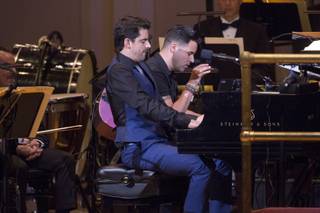

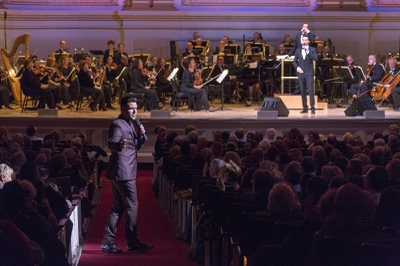
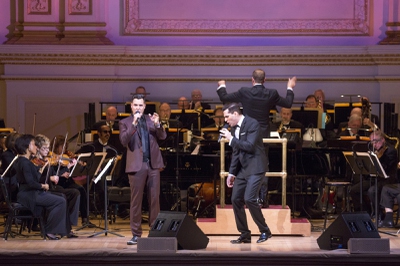
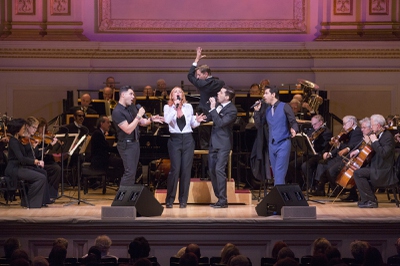

Join the Discussion:
Check this out for a full explanation of our conversion to the LiveFyre commenting system and instructions on how to sign up for an account.
Full comments policy